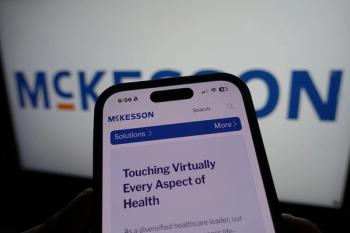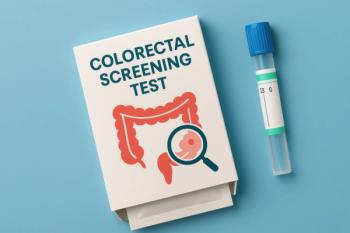
Are Unrefreshing Naps Associated With Fragmented Sleep in Idiopathic Hypersomnia?
A study investigating potential subtypes of idiopathic hypersomnia (IH) found that patients with IH who experience unrefreshing naps have less fragmented sleep compared with those who take refreshing naps, suggesting unrefreshing naps could serve as a supportive IH clinical feature.
Patients with
“These results suggest that unrefreshing naps are not due to poor sleep quality, but could rather be explained by a weak arousal drive. More studies are needed to investigate the multifactorial nature of IH and better understand subgroup differences in IH patients,” the authors commented.
IH is characterized by excessive daytime sleepiness. Unrefreshing naps are supportive clinical features of IH, reported by over 50% of patients with IH. However, the reasons behind unrefreshing naps are not fully understood, and it is unclear whether individuals with and without unrefreshing naps can be classified as having distinct subtypes of IH.
During the analysis, 112 patients with IH underwent a polysomnography (PSG) followed by a multiple sleep latency test (MSLT). Patients also completed a sleep diary for 2 weeks before the PSG and self-administered questionnaires to investigate the severity of symptoms for depression, anxiety, daytime sleepiness, and the restorative extent of nighttime sleep. Sleep medicine physicians conducted semistructured clinical interviews where patients were questioned on the refreshing aspects of their naps.
Patients with unrefreshing naps were compared with those who reported refreshing naps on all variables, with age as a covariable. A sensitivity analysis was also performed to assess the same comparisons in patients with objective markers of IH and those with IH diagnosed based only on clinical judgment.
Among the patients, 68 reported unrefreshing naps and 44 had refreshing naps. In both groups, female patients represented the majority (73.5% and 59.1%, respectively). The mean (SD) age of the unrefreshing naps group was 31.6 (8.4) years, slightly youger than the mean in the refreshing naps group (37.7 [11.4] years).
Participants experiencing unrefreshing naps, as observed in nighttime PSG, exhibited specific sleep patterns compared with those reporting refreshing naps. The former group demonstrated a lower meanawakening index and a lower percentage of stage 1 sleep (last third of the night: unrefreshing naps. 3.4% [1.7%] vs refreshing naps 5.0% [2.9%]; P < .001; 2 halves of the night: unrefreshing naps. 4.6% [2.3%] vs refreshing naps 6.8% [3.7%]; P = .003). Moreover, the unrefreshing naps group showed a higher percentage of rapid eye movement (REM) sleep.
In terms of sleep microarchitecture, the unrefreshing naps group had a lower sleep stage transition index, particularly showing fewer transitions from stage 1 to stage 2 and other sleep stages. Notably, despite these differences in nighttime sleep characteristics, there were no significant variations in daytime nap-related features during the MSLT, including mean sleep onset latency and the number of naps.
Additionally, individuals with unrefreshing nighttime sleep were more likely to report unrefreshing daytime naps. No significant group differences were found in MSLT characteristics when each nap was assessed separately.
The sensitivity analysis comparing patients who received their diagnosis based on clinical features and complaints (subjective IH) with those who had objective markers of IH (objective IH) found that 47% of the sample (n = 53) fell into the subjective IH category. Patients with objective IH with unrefreshing naps, as observed in nighttime PSG, exhibited a lower awakening index compared with patients with refreshing naps.
In the subjective IH group, patients with unrefreshing naps displayed distinct sleep patterns, including a lower percentage of stage 1 sleep, a lower sleep stage transitions index, and a longer sleep onset latency compared with those with refreshing naps. These differences highlight variations in sleep characteristics between objective and subjective IH subgroups.
Importantly, the study highlighted the potential use of assessing the unrefreshing aspect of naps as an additional marker of IH severity, especially when other diagnostic criteria are borderline. The study discussed the heterogeneity in IH severity and phenotypes, suggesting the existence of subgroups based on the refreshing aspect of naps and sleep consolidation.
The pathophysiology of IH was explored, with a focus on arousal drive vs sleep pressure, suggesting that the phenotype with unrefreshing naps may represent a subgroup unable to efficiently reduce sleep pressure. The researchers also discussed the overlap between IH and narcolepsy type 2 and the need for further investigation into orexin levels in relation to the refreshing aspects of naps in noncataplectic hypersomnia.
Reference
Mombelli S, Deshaies-Rugama AS, Blais H, et al. Are unrefreshing naps associated with nocturnal sleep architecture specificities in idiopathic hypersomnia? Sleep. 2023;46(11):zsad175. doi:10.1093/sleep/zsad175
Newsletter
Stay ahead of policy, cost, and value—subscribe to AJMC for expert insights at the intersection of clinical care and health economics.













































